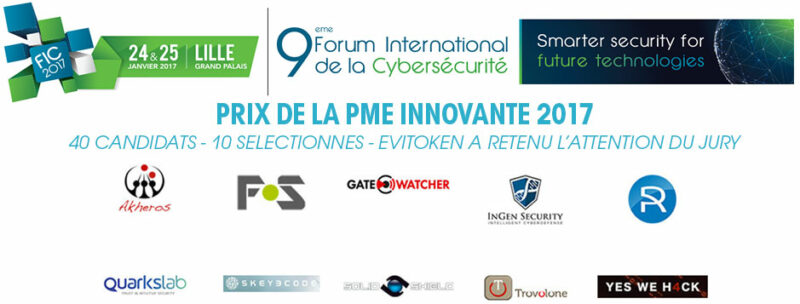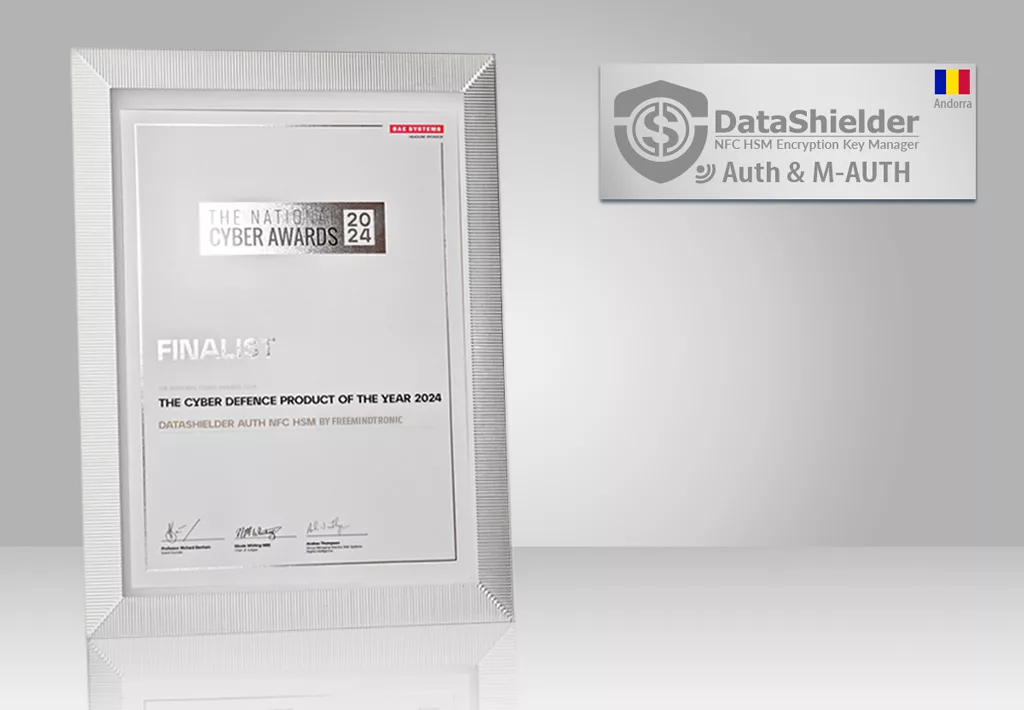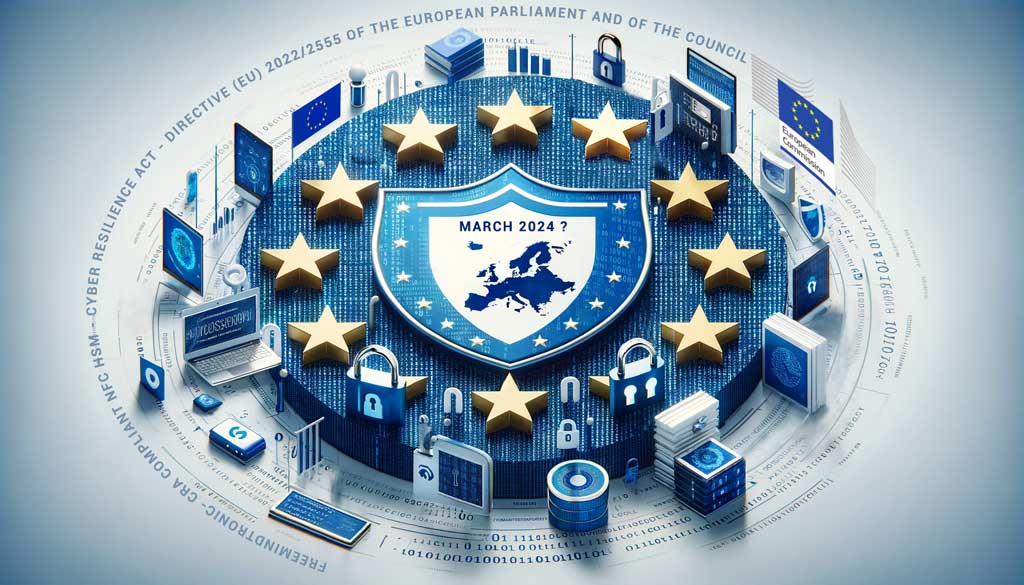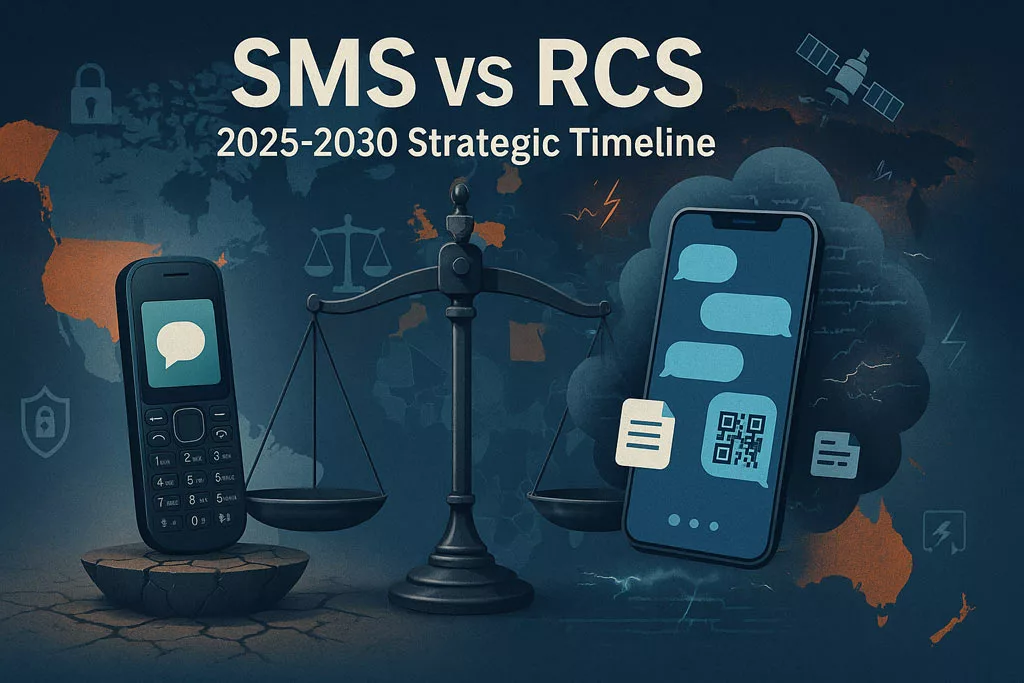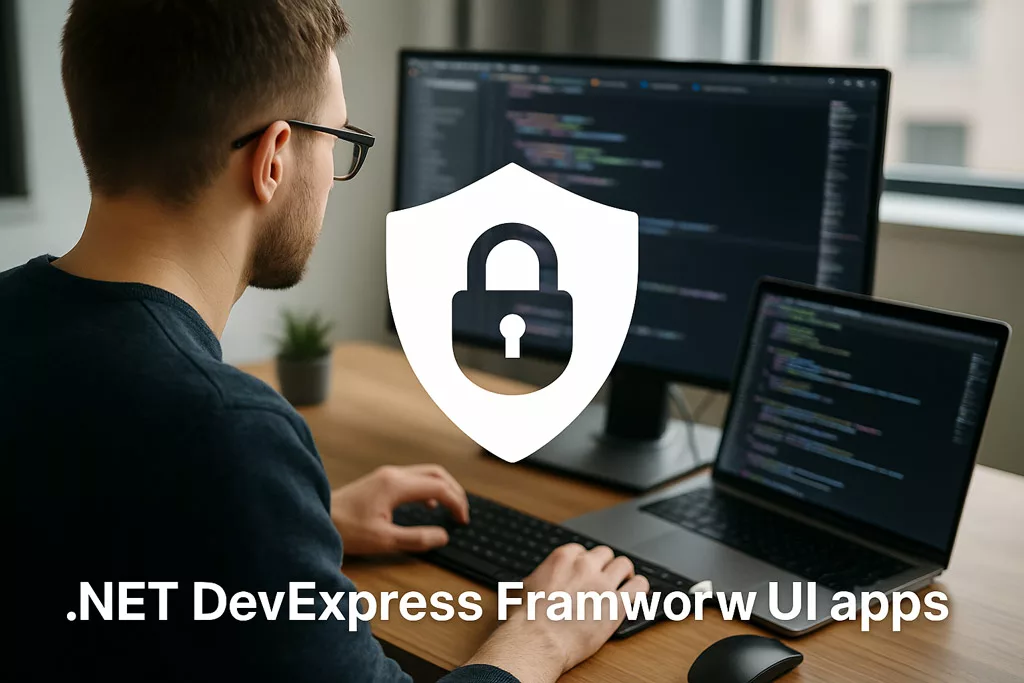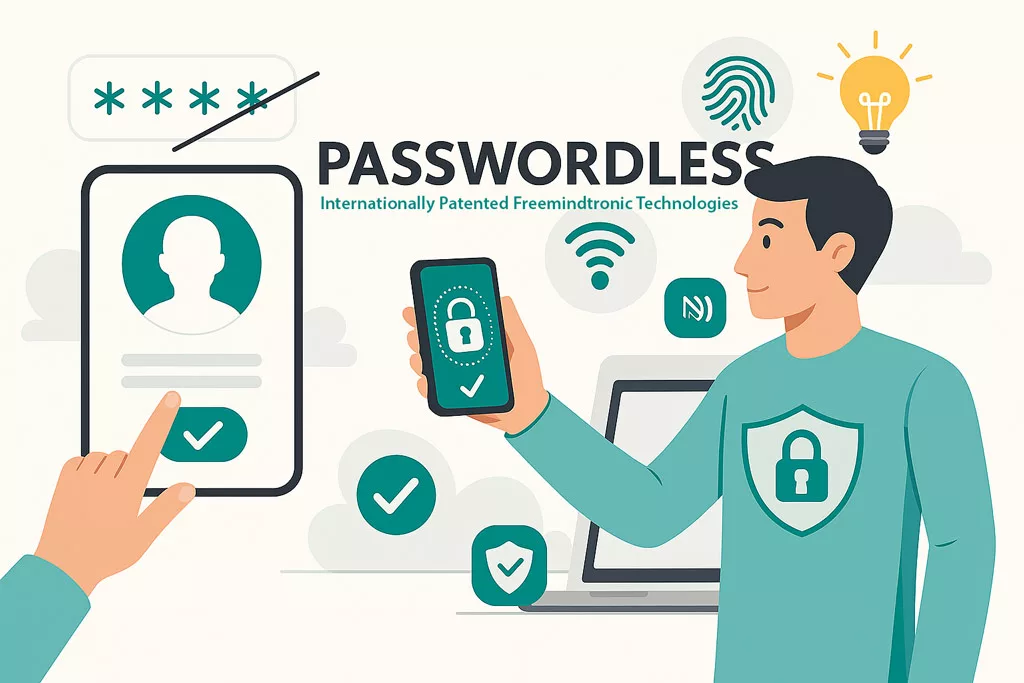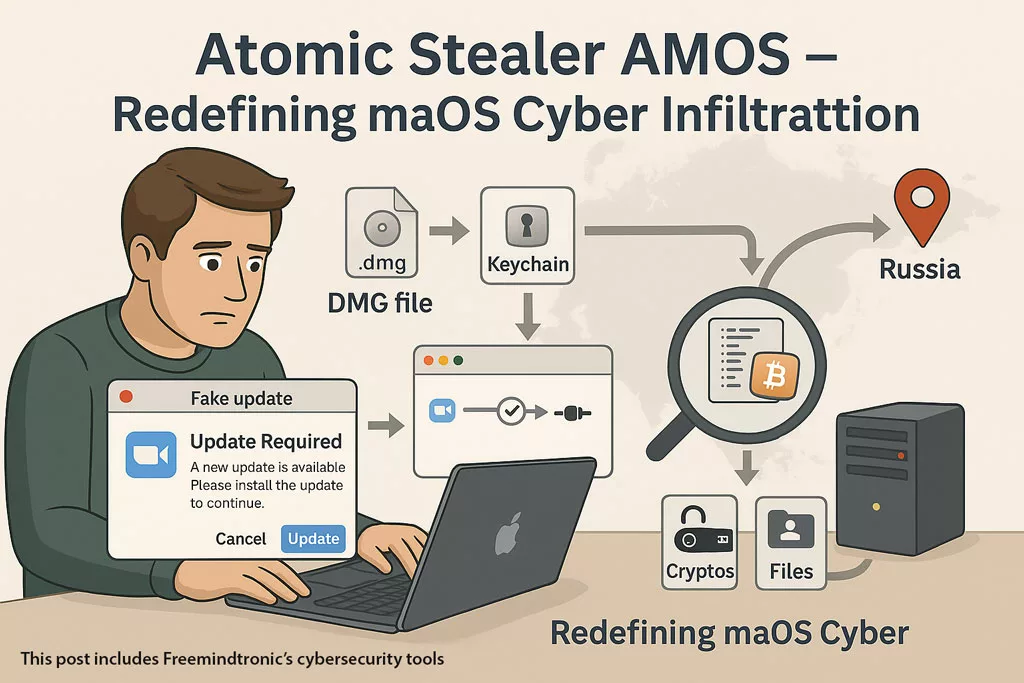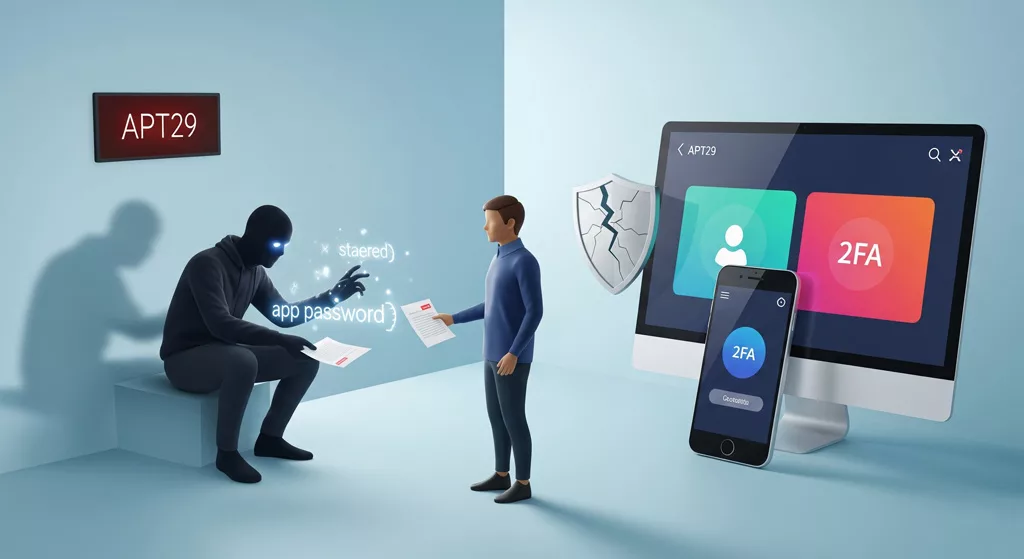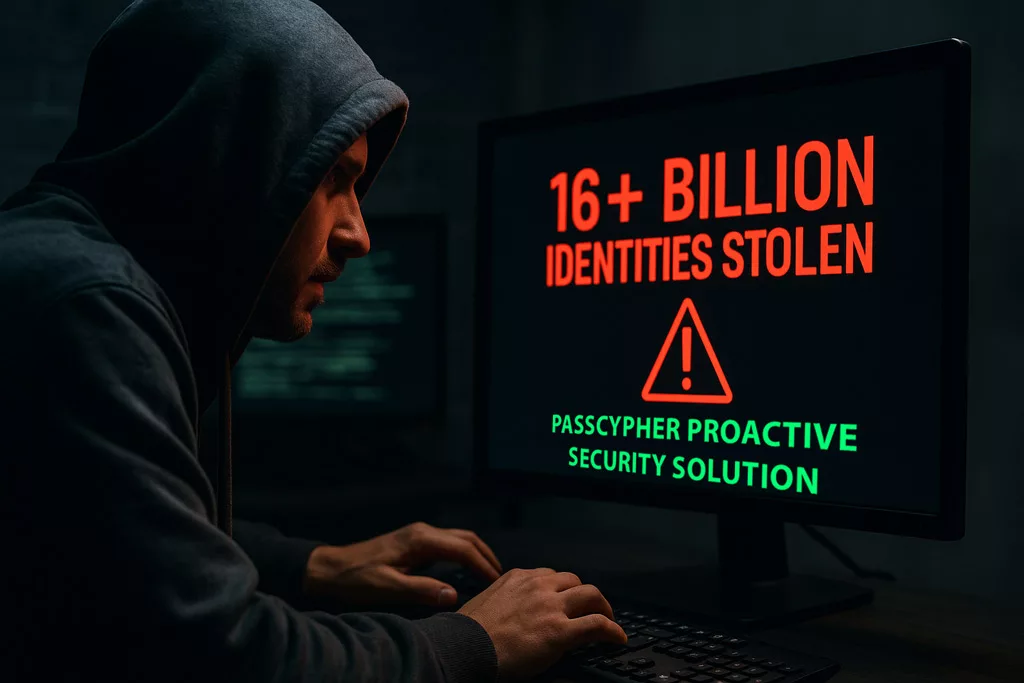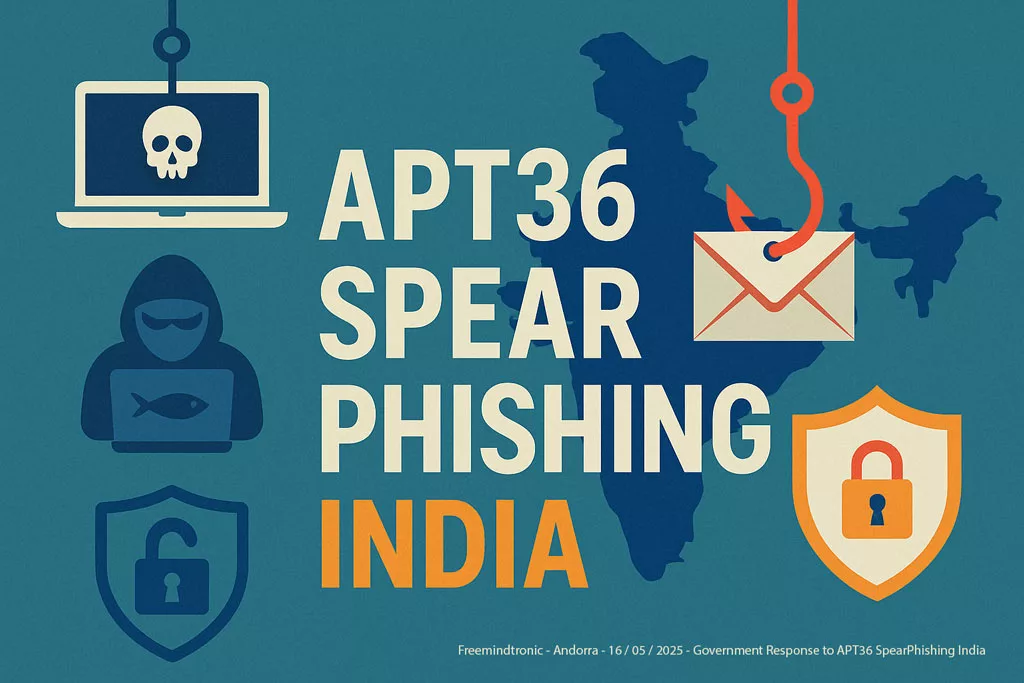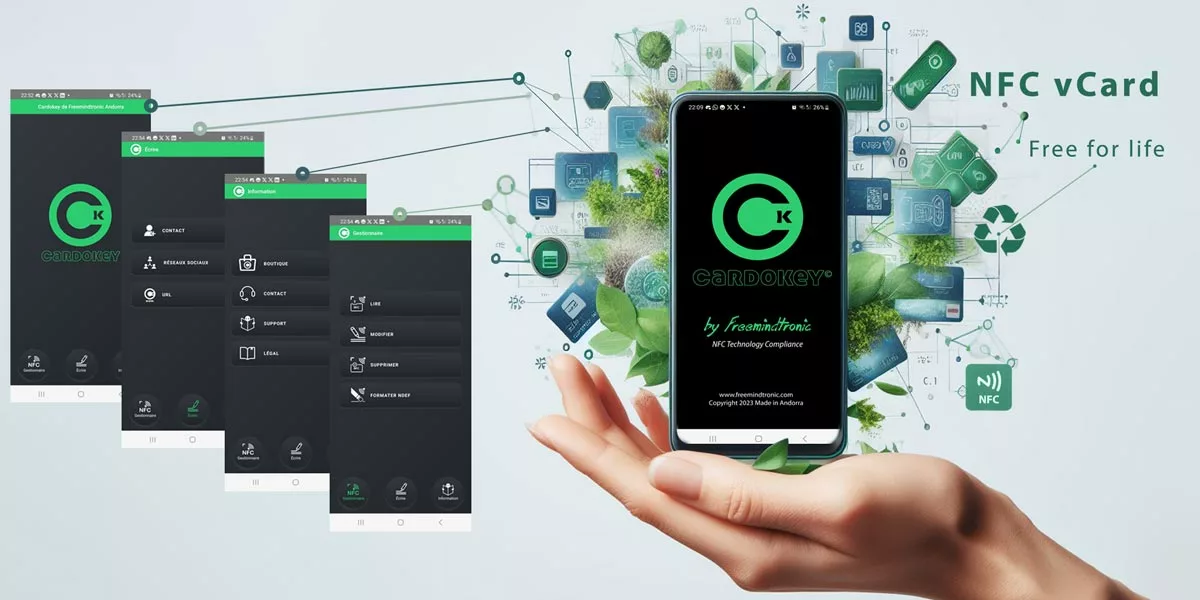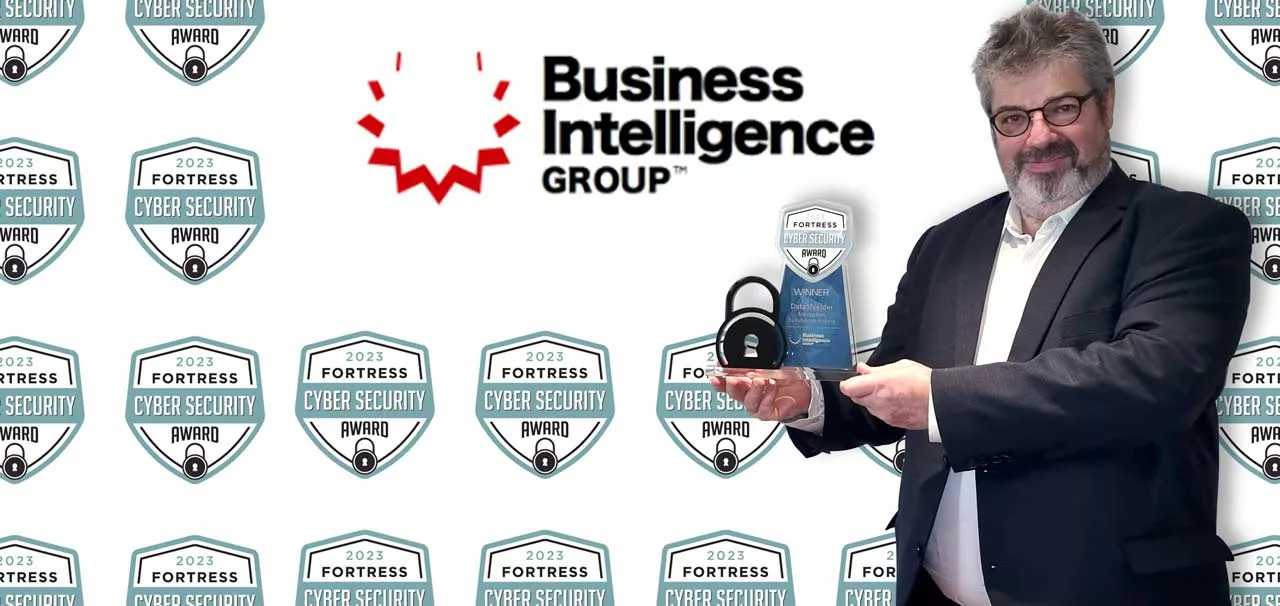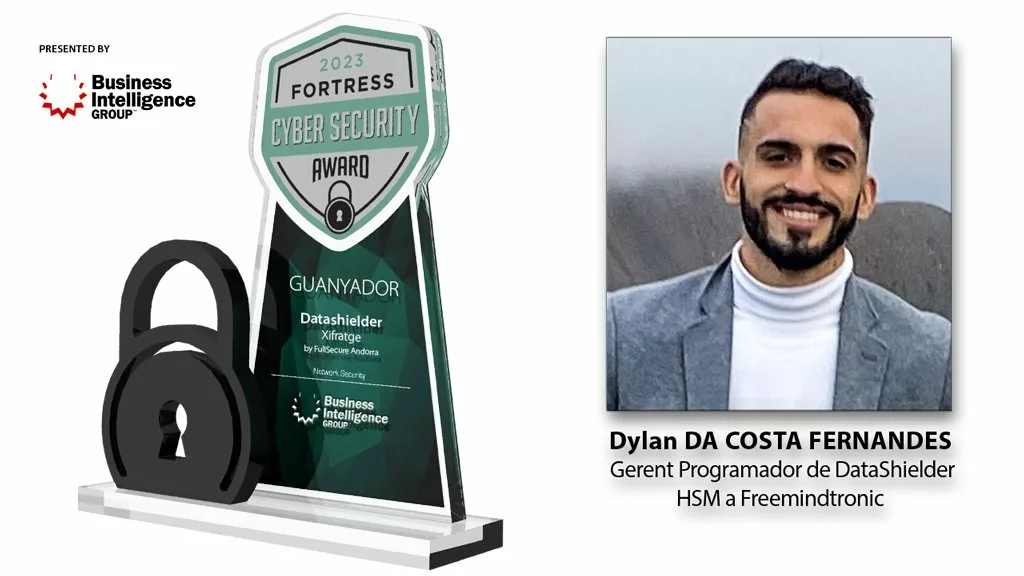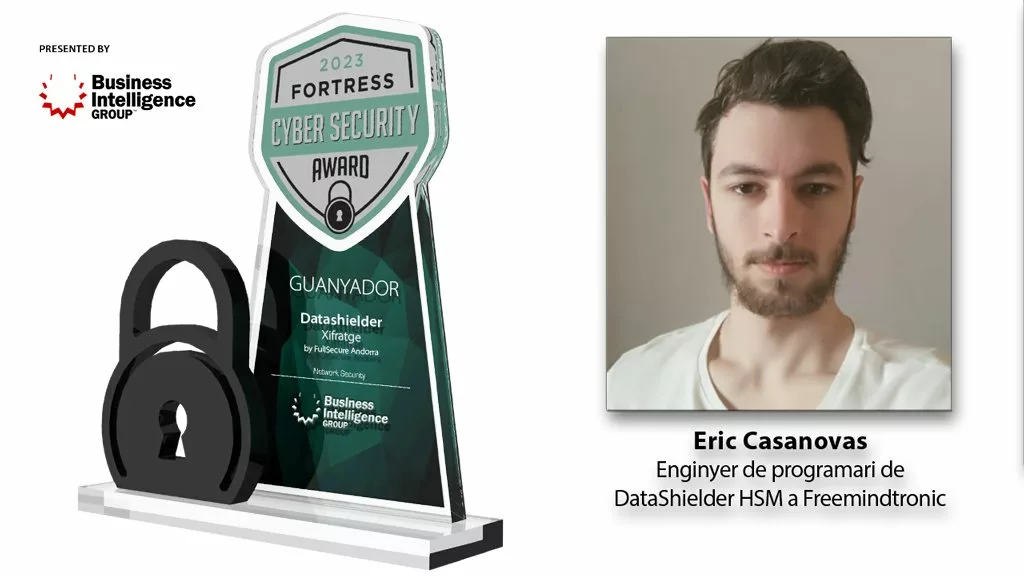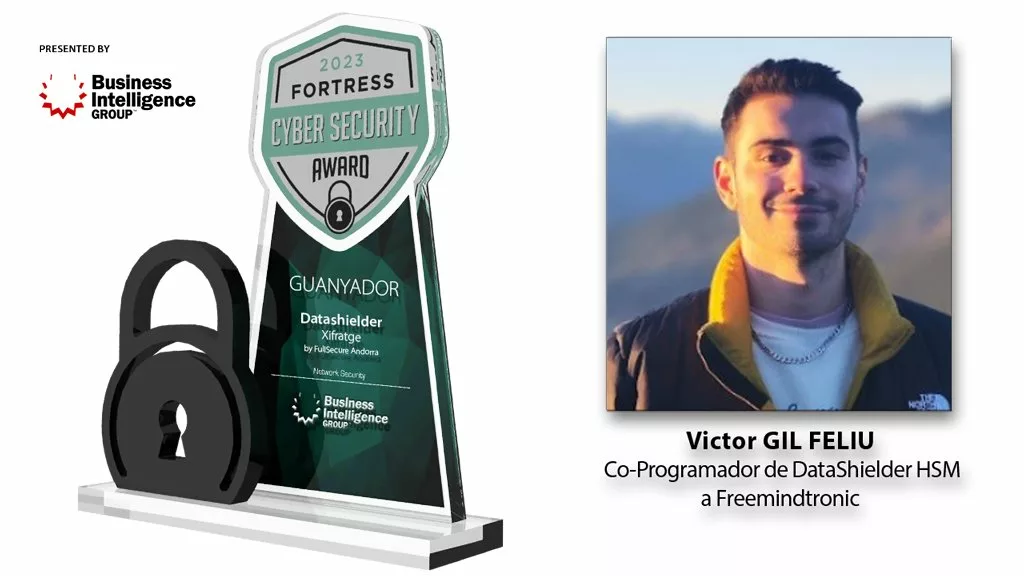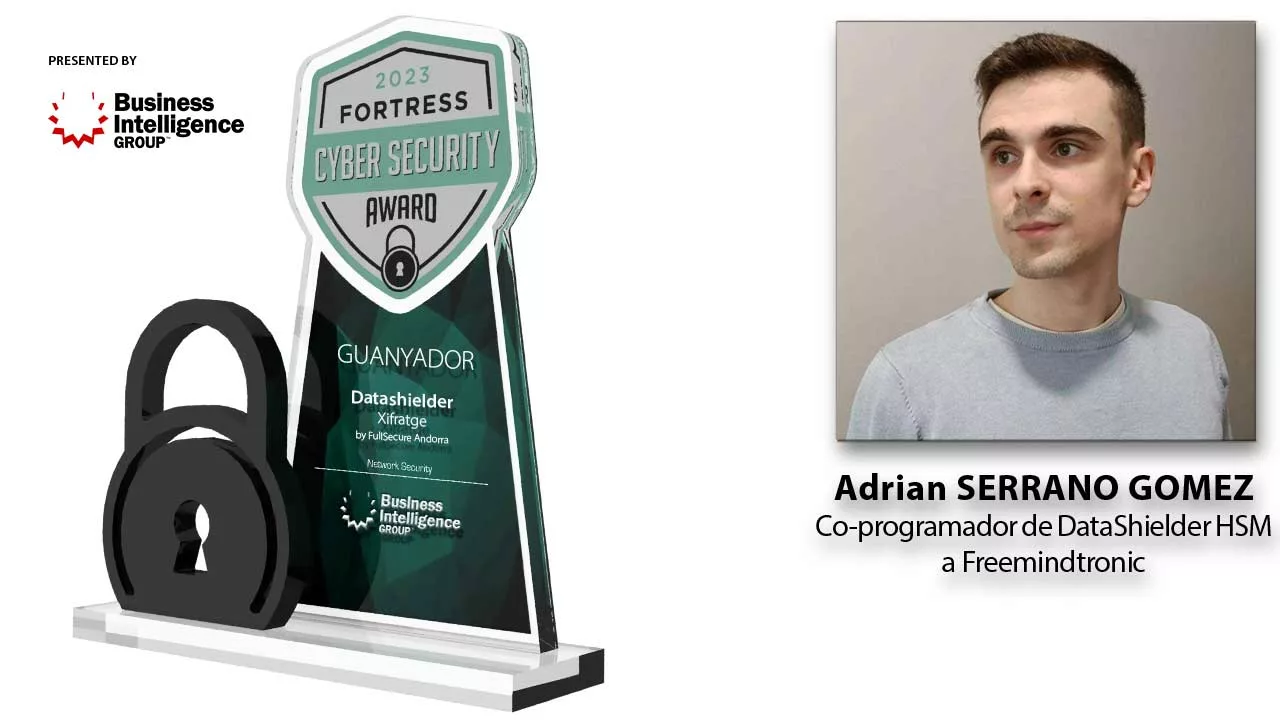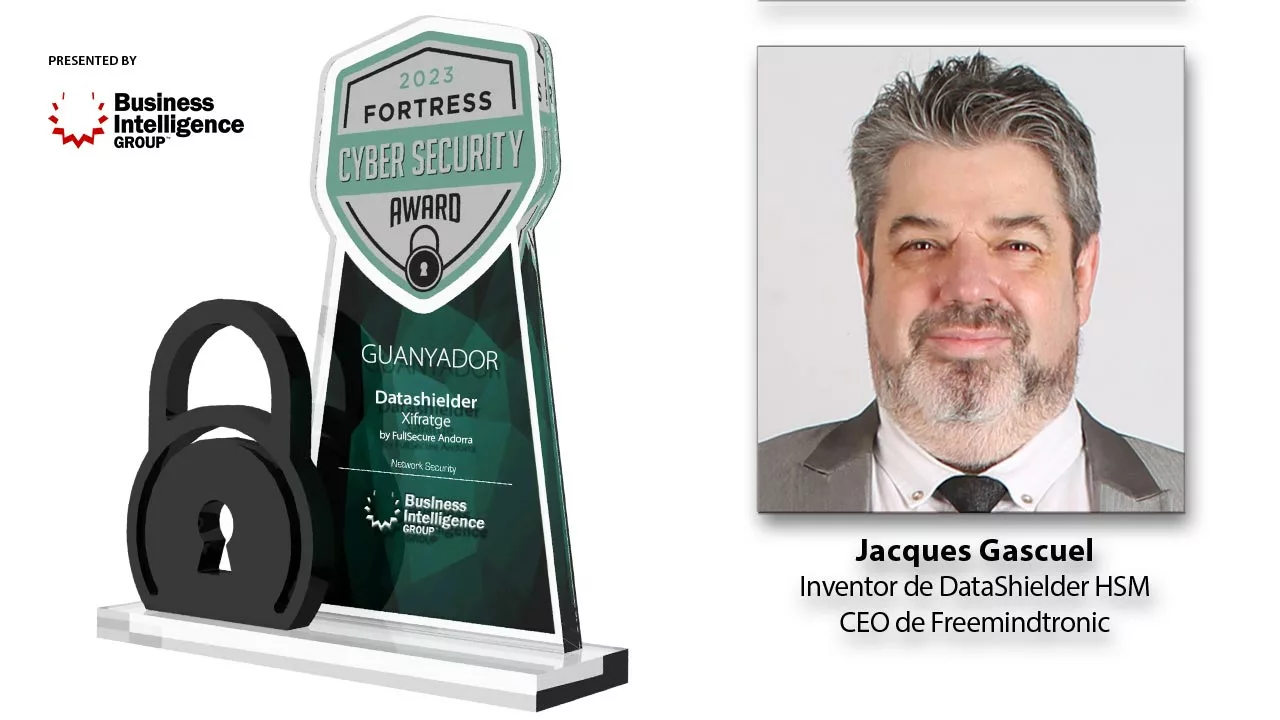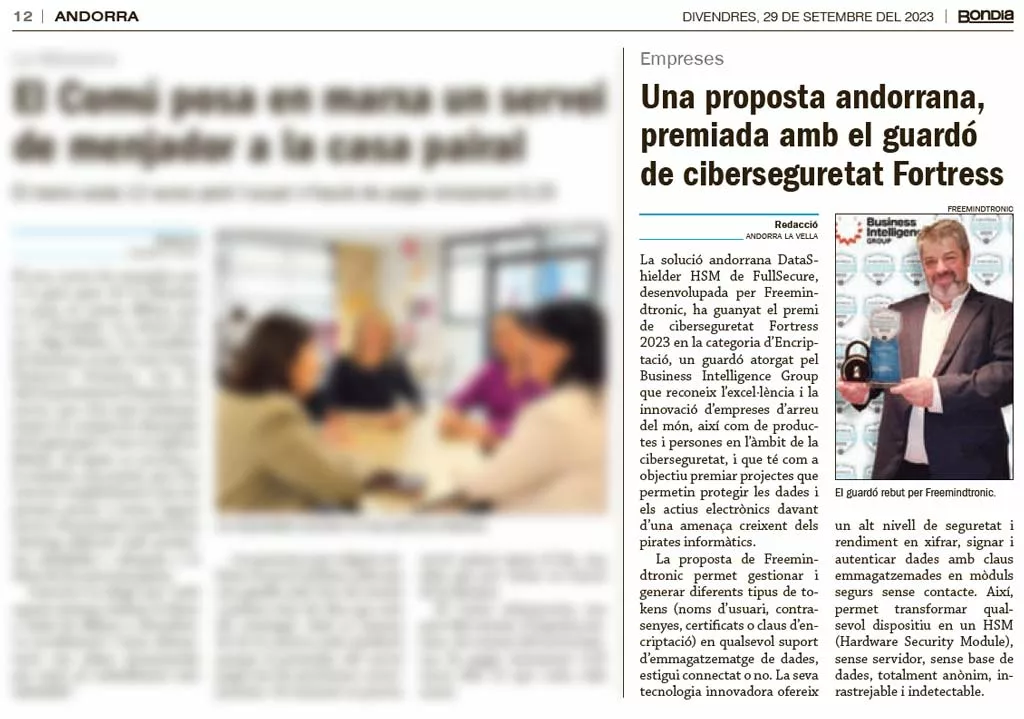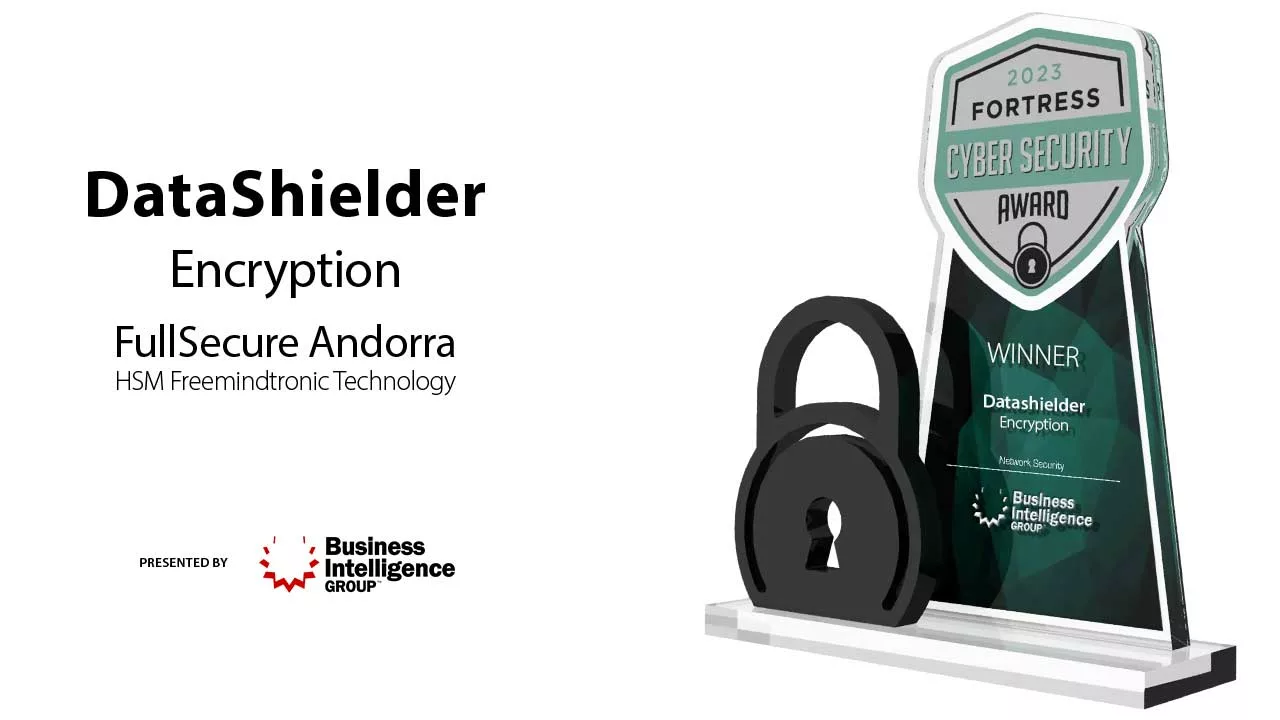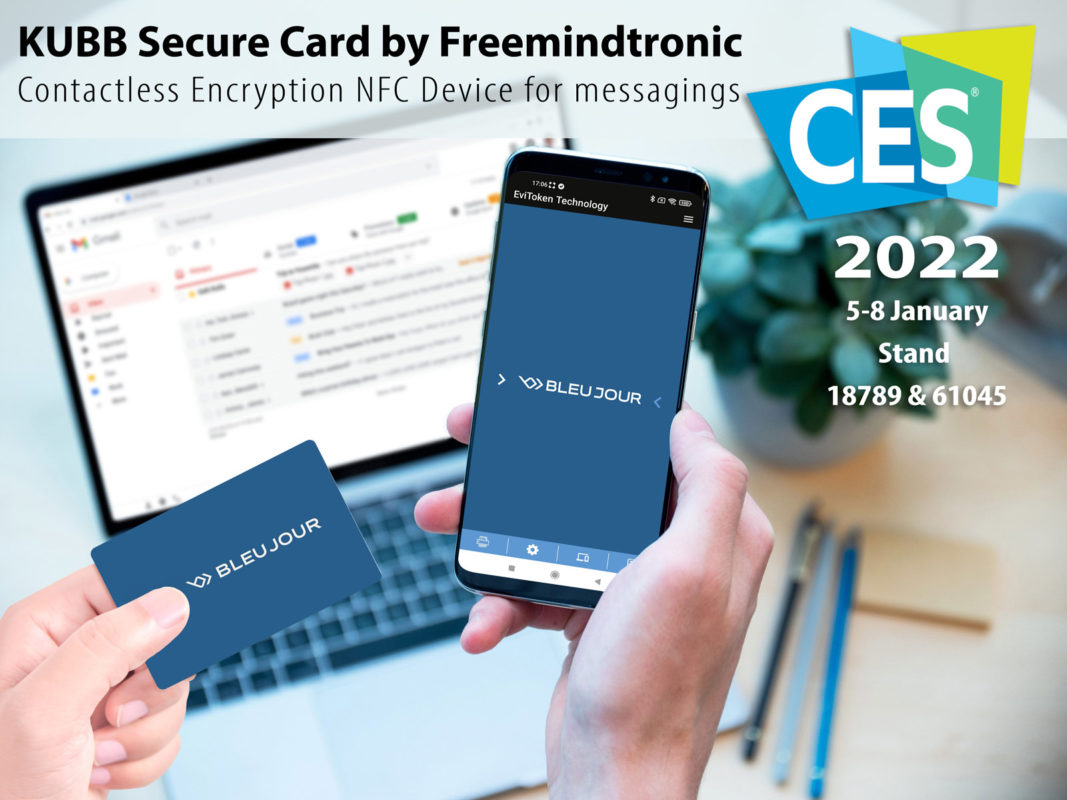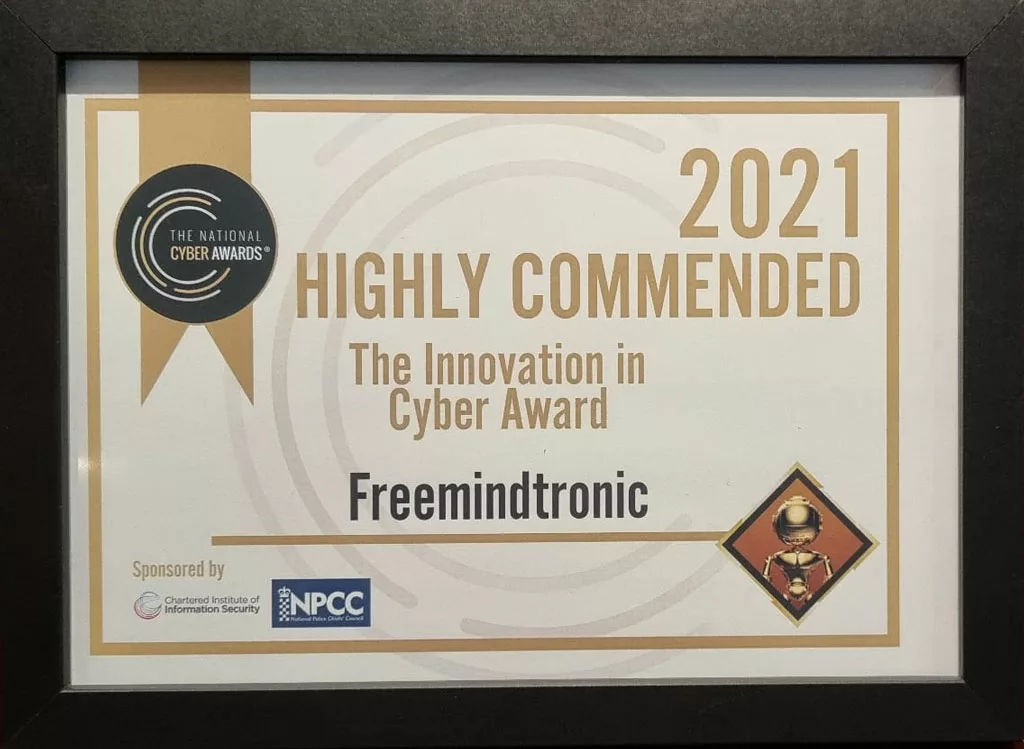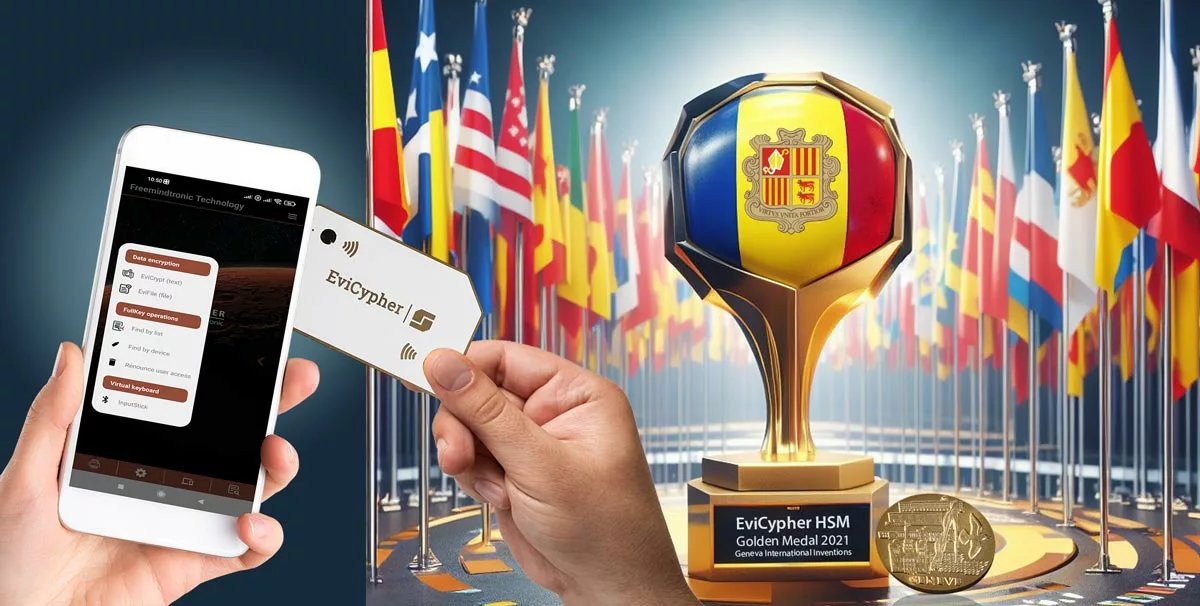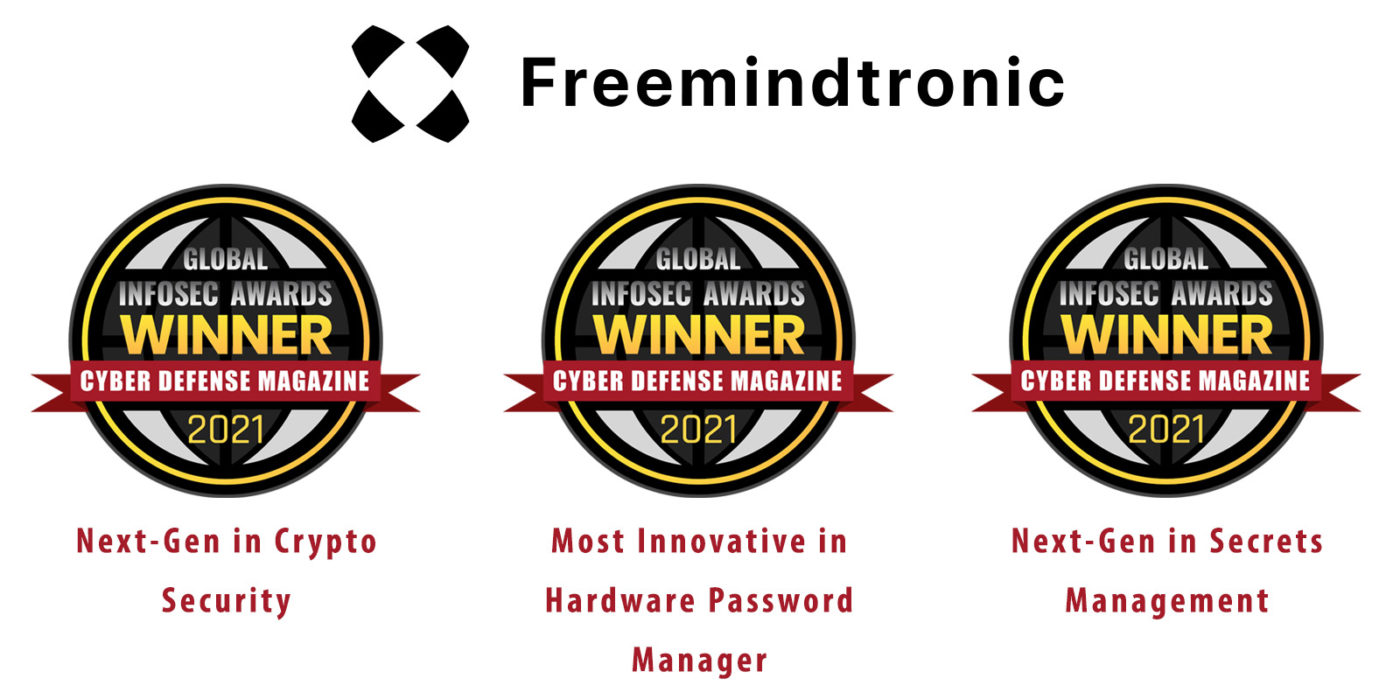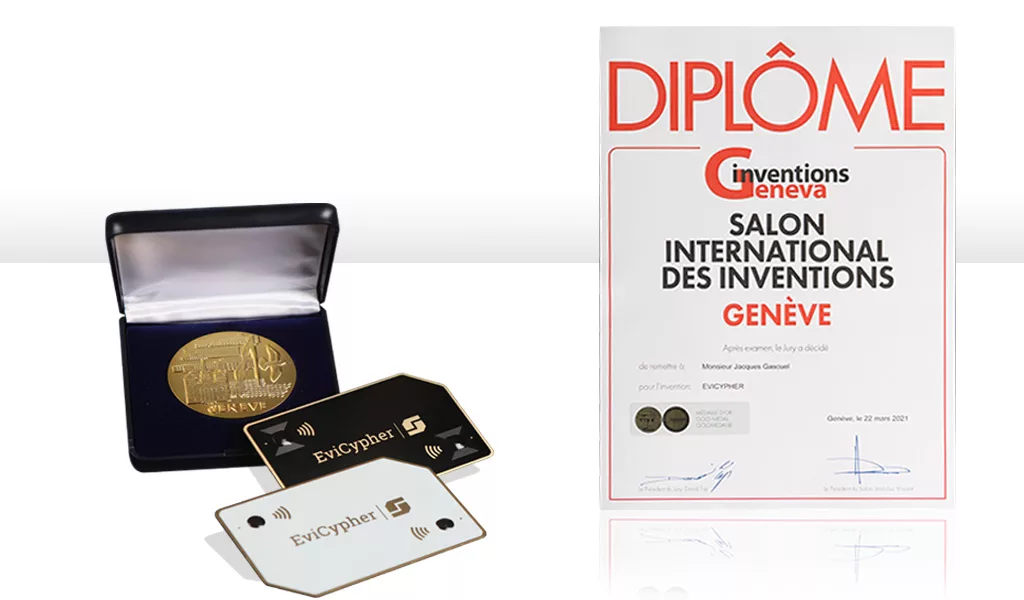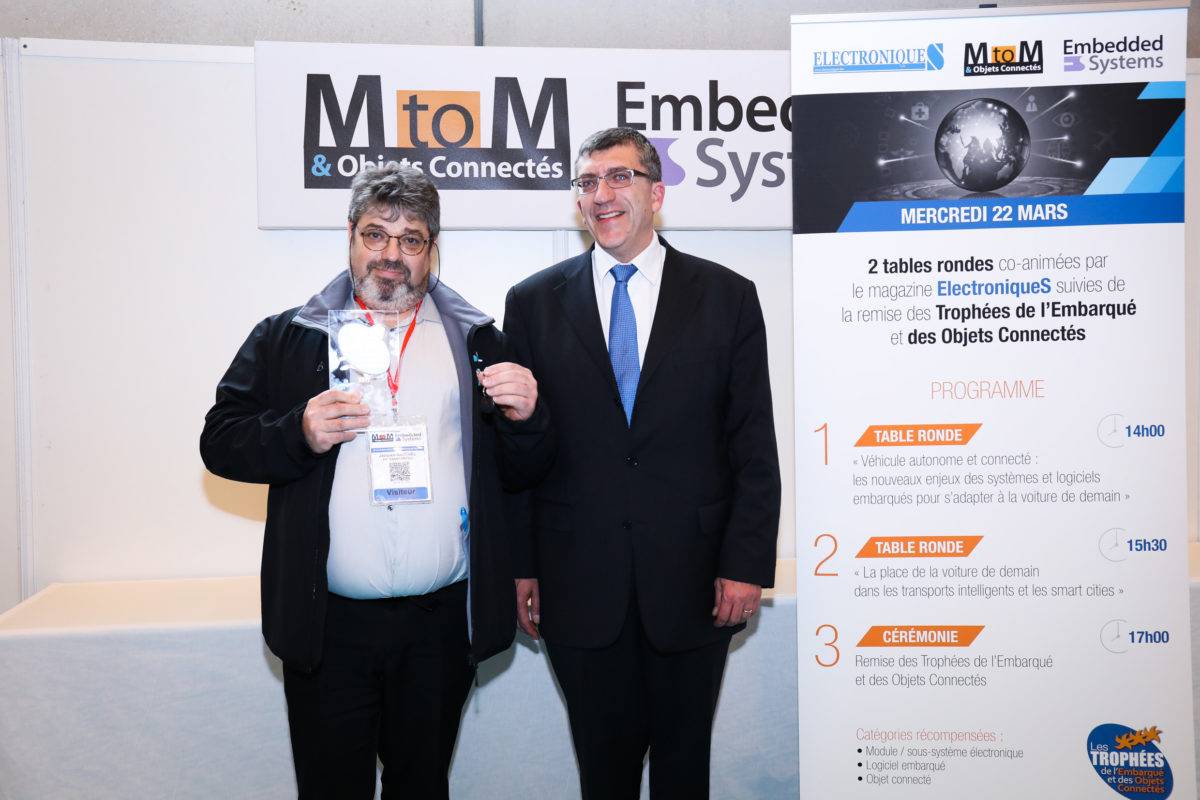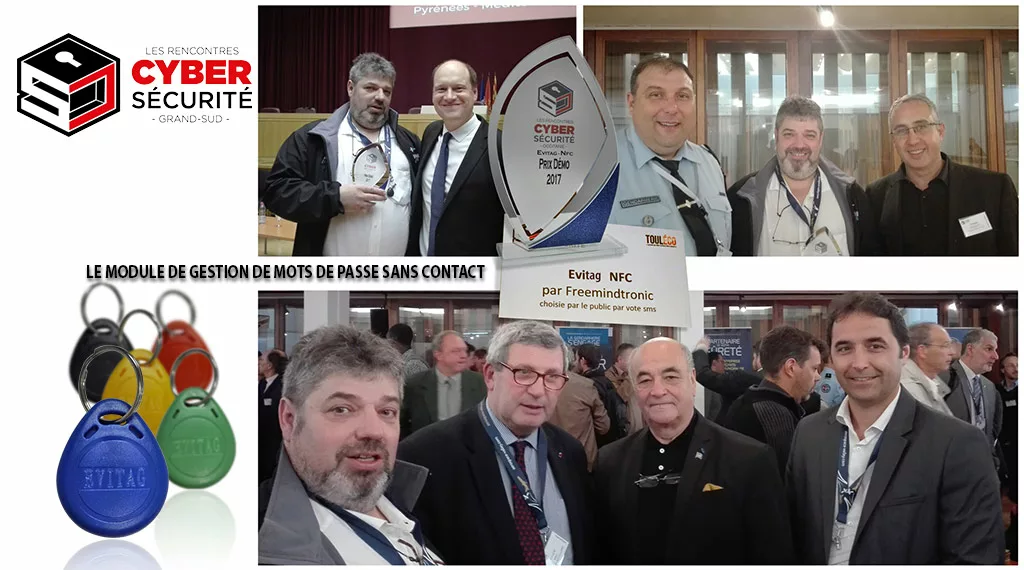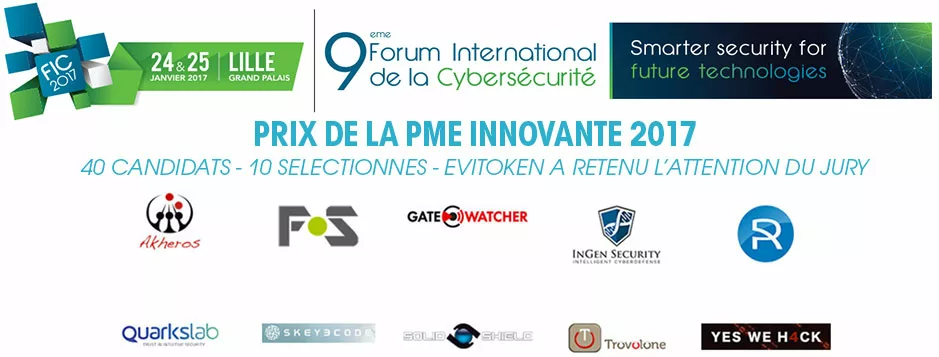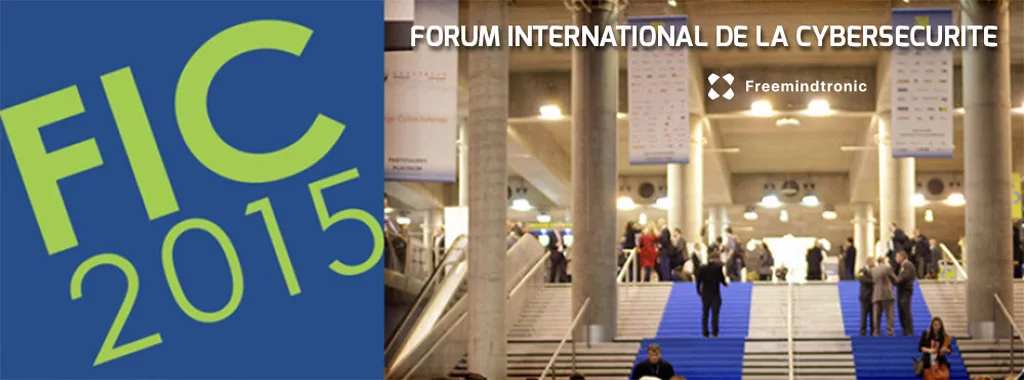COMMUNIQUÉ DE PRESSE – DataShielder Auth NFC HSM conçu en Andorre par Freemindtronic Finaliste pour le Produit de Cyberdéfense de l’Année 2024!
Les National Cyber Awards 2024 célèbrent l’excellence des produits de cyberdéfense de l’année avec BAE Systems comme sponsor principal
Escaldes-Engordany, Andorre, 5 août 2024 – Cyber Defence Product of the Year, Freemindtronic Andorra, finaliste, annonce avec fierté sa sélection pour ce prestigieux prix aux National Cyber Awards 2024. Ces prix, désormais dans leur sixième édition, honorent les contributions et les réalisations exceptionnelles dans le domaine de la cybersécurité.
Alors que les menaces numériques s’intensifient, la cybersécurité devient de plus en plus cruciale. Les cyberattaques, y compris le vol d’identité, les ordres de transfert falsifiés, le vol de données sensibles, l’espionnage industriel à distance et de proximité, ainsi que le vol d’informations sensibles sur les téléphones (comme les SMS, les mots de passe, les codes 2FA, les certificats et les clés secrètes), présentent des risques extrêmement préjudiciables pour les entreprises, les gouvernements et les individus à l’échelle mondiale. Les National Cyber Awards, reconnus comme un gage d’excellence, établissent des normes dans l’industrie. Ils sont conçus pour encourager l’innovation, la résilience et la dévotion à la protection du paysage numérique. Ils favorisent l’amélioration continue et l’adoption des meilleures pratiques à l’échelle mondiale.
Cette année, les National Cyber Awards 2024 visent à récompenser ceux qui s’engagent en faveur de l’innovation cybernétique, de la réduction de la cybercriminalité et de la protection des citoyens en ligne. Gordon Corera, le célèbre correspondant de sécurité de la BBC, apporte son immense expertise à cet événement. Il couvre des questions critiques comme le terrorisme, la cybersécurité, l’espionnage et diverses préoccupations de sécurité mondiale. Il note que l’événement de 2024 promet une célébration de l’excellence et de l’innovation au sein de l’industrie de la cybersécurité. Cela offre des perspectives uniques d’une des voix principales de la sécurité internationale.
National Cyber Awards maintient l’Intégrité et l’Équité pour tous ses trophées
Leur jury indépendant maintient l’intégrité du processus d’évaluation des National Cyber Awards en adhérant à un code de conduite strict. Cela garantit un processus d’évaluation juste, transparent et rigoureux. Ils s’engagent pour empêcher toute pratique de paiement pour concourir. Ceci est essentiel pour maintenir les normes les plus élevées d’impartialité dans leurs récompenses.
La cérémonie de remise des prix comprend des catégories telles que les Services de Police et d’Application de la Loi, le Service Public, l’Innovation et la Défense, la Cyber dans les Entreprises, l’Éducation et l’Apprentissage. Les nominés et les lauréats seront célébrés pour leur impact significatif sur la sécurisation du cyberespace contre les menaces en constante évolution.
Freemindtronic Andorre a été sélectionné par le jury comme finaliste pour le Produit de Cyberdéfense de l’Année avec notre produit, DataShielder Auth NFC HSM.
Les organisateurs de l’événement nous ont notifié:
“Nous sommes ravis de vous informer que vous avez été sélectionné par notre panel de juges comme finaliste pour le Produit de Cyberdéfense de l’Année 2024! Il s’agit d’une réalisation exceptionnelle, compte tenu des centaines de candidatures que nous avons reçues cette année. Félicitations de la part de toute l’équipe des National Cyber Awards!”
Le dirigean de Freemindtronic déclare:
“Nous nous sentons honorés et reconnaissants d’être reconnus parmi les leaders de la cybersécurité. Être finaliste valide notre engagement envers l’innovation et la protection des données sensibles et des identités numériques contre les menaces en constante évolution, désormais assistées par l’intelligence artificielle. Nous sommes très honorés et fiers d’être nommés parmi les finalistes représentant le 10e plus petit pays du monde, Andorre, en tant qu’acteur industriel de la cyberdéfense. Au nom de l’équipe de Freemindtronic et de moi-même, nous félicitons tous les autres finalistes.”
Jacques Gascuel, PDG et Chef de la Recherche et du Développement, concepteur de solutions de contre-espionnage et détenteur de brevets au Royaume-Uni, sera présent à la cérémonie d’annonce des lauréats.
Cette deuxième nomination pour notre entreprise andorrane Freemindtronic par le jury des National Cyber Awards marque un autre jalon dans la conception et la fabrication de produits de contre-espionnage d’usage civil et militaire accessibles à tous. Nous avons été précédemment reconnus en 2021 comme “Highly Commended at National Cyber Awards” et finalistes pour deux années consécutives en 2021.
Message du Premier Ministre du Royaume-Uni pour les National Cyber Awards 2024
L’Honorable Keir Starmer, Premier Ministre du Royaume-Uni, commente les prix: “Les National Cyber Awards sont une merveilleuse façon de récompenser, de célébrer et de mettre en valeur le travail de ceux qui s’engagent à nous protéger. Veuillez transmettre mes plus chaleureuses félicitations aux lauréats qui sont une source d’inspiration pour tous ceux du secteur qui souhaitent protéger les autres.”
Les National Cyber Awards auront lieu à Londres le 23 septembre, la veille de l’Expo Cybernétique Internationale annuelle.
Les organisateurs félicitent tous les autres finalistes et attendent avec impatience de célébrer cet événement international avec nous le 23 septembre lors de la cérémonie de remise des prix! Si vous souhaitez vous joindre à nous pour une soirée de célébration et d’excitation, vous pouvez acheter des billets et des tables pour l’événement via le site web à l’adresse www.thenationalcyberawards.org.
Notes aux Rédacteurs
Qu’est-ce que les National Cyber Awards?
Les National Cyber Awards ont débuté en 2019 dans le but de célébrer l’excellence et l’innovation parmi ceux qui se consacrent à la cybersécurité. En effet, ces prix mettent en lumière les réalisations exceptionnelles de professionnels, d’entreprises et d’éducateurs des secteurs privé et public. D’ailleurs, des leaders de l’industrie, passionnés par l’élévation du domaine de la cybersécurité, ont conçu ces prix. Ainsi, ils reconnaissent et inspirent l’engagement à relever les défis en constante évolution de la cybersécurité.
En ce qui concerne leur mission, elle est d’identifier et de célébrer les contributions exceptionnelles dans le domaine. En outre, nous aspirons à fournir un critère d’excellence auquel tout le monde peut aspirer. De plus, nous envisageons un avenir où chaque innovation en cybersécurité internationale est reconnue et célébrée. Cette reconnaissance encourage l’amélioration continue et l’adoption des meilleures pratiques à l’échelle mondiale. Grâce au soutien de nos sponsors, la participation aux prix reste gratuite. En conséquence, chaque finaliste reçoit un billet gratuit pour la cérémonie, minimisant les barrières à l’entrée et rendant la participation accessible à tous.
http://www.thenationalcyberawards.org
Contact: Future Tech Events, Fergus Bruce, info@futuretechevents.com
Finalistes 2024 pour les National Cyber Awards dans la catégorie “Produit de Cyberdéfense de l’Année 2024”
- Appdome Unified Mobile App Defense Platform – Israël: appdome.com
- Arqit SKA Platform™ – Londres: arqit.uk/arqit-ska-platform
- BlockAPT Cyber Defence Platform: Établir un nouveau paradigme pour l’innovation de la prochaine génération – Londres: blockapt.com
- Graboxy AI Cybersecurity Platform – Londres: graboxy.com (détenteur des National Cyber Awards du Royaume-Uni AI Cyber Product of the Year 2023)
- DataShielder Auth NFC HSM – Freemindtronic, Andorre: freemindtronic.com/product/datashielder-nfc-hsm-auth
Résumé du Candidat
- Produit: DataShielder Auth NFC HSM
- Catégorie: Produit de Cyberdéfense de l’Année 2024
- Nom: Jacques Gascuel
- Entreprise: Freemindtronic
- Courriel: contact at freemindtronic.com
- Biographie de l’Entreprise: Freemindtronic se distingue par sa spécialisation dans la conception, l’édition et la fabrication de solutions de contre-espionnage. En effet, notre dernière innovation, le DataShielder Auth NFC HSM, sert de solution de contre-espionnage à double usage pour les applications civiles et militaires. Notamment, nous avons présenté cette solution pour la première fois au public le 17 juin 2024 à Eurosatory 2024. Plus précisément, elle combat activement le vol d’identité, l’espionnage et l’accès aux données et messages sensibles et classifiés grâce au chiffrement post-quantum AES 256 CBC. De surcroît, elle fonctionne hors ligne, sans serveurs, sans bases de données, et sans nécessiter que les utilisateurs s’identifient ou changent leurs habitudes de stockage de données sensibles, de services de messagerie ou de protocoles de communication, tout en évitant les coûts d’infrastructure. C’est pourquoi nous avons spécialement conçu le DataShielder Auth NFC HSM pour combiner sécurité et discrétion. Concrètement, il se présente sous deux formes pratiques : une carte de la taille d’une carte de crédit et une étiquette NFC discrète. D’une part, la carte se glisse facilement dans un portefeuille, à côté de vos cartes bancaires NFC, et protège physiquement contre l’accès illicite. D’autre part, vous pouvez attacher l’étiquette NFC, similaire à un badge d’accès RFID, à un porte-clés ou la cacher dans un objet personnel. Ainsi, cette approche garantit que vous ayez toujours votre DataShielder Auth NFC HSM à portée de main, prêt à sécuriser vos communications, authentifier les collaborateurs et valider les donneurs d’ordres, le tout sans attirer l’attention.
Caractéristiques Additionnelles du Produit
- Compatibilité avec Divers Systèmes de Communication: DataShielder Auth NFC HSM est compatible avec plusieurs systèmes de communication, y compris les e-mails, les chats, les webmails, les SMS, les MMS, les RCS et les services de messagerie instantanée publics et privés. Cette compatibilité universelle permet une intégration parfaite dans les environnements de communication existants. Cela assure une protection continue sans modifications significatives de l’infrastructure.
- Protection Contre les Attaques Assistées par IA: DataShielder Auth NFC HSM fournit une protection avancée contre les attaques sophistiquées assistées par IA. Avec un chiffrement robuste et une authentification forte, le produit élimine les risques posés par les tentatives de vol d’identité utilisant des techniques avancées d’ingénierie sociale. Ainsi, il assure une sécurité améliorée pour les utilisateurs.
- Méthodes de Gestion des Clés: Le produit utilise des modules de sécurité matériels dotés de la technologie NFC pour créer et gérer les clés de manière sécurisée. Les dispositifs DataShielder stockent de manière sécurisée les clés de chiffrement générées aléatoirement. Le système fonctionne sans serveurs ni bases de données. Cela offre un anonymat de bout en bout et réduit significativement les points potentiels de vulnérabilité.
Les produits DataShielder NFC HSM sont disponibles exclusivement en France à travers AMG Pro et internationalement à travers Fullsecure Andorra.
Nous remercions tous les membres du jury pour l’intérêt qu’ils ont montré envers notre dernier produit révolutionnaire, le DataShielder NFC HSM.
Jury des National Cyber Awards
- Mary Haigh: CISO, BAE Systems
- Rachael Muldoon: Avocate, Maitland Chambers
- Shariff Gardner: Chef de la Défense, Militaire et Application de la Loi, Royaume-Uni, Irlande et Pays Nordiques, SANS Institute
- Damon Hayes: Commandant Régional, National Crime Agency
- Miriam Howe: Responsable de la Consultation Internationale, BAE Systems Digital Intelligence
- Myles Stacey OBE: Conseiller Spécial du Premier Ministre, 10 Downing Street
- Daniel Patefield: Chef de Programme, Cyber & National Security, techUK
- Sir Dermot Turing: Administrateur, Bletchley Park Trust
- Nicola Whiting MBE: Présidente du Jury
- Oz Alashe MBE: PDG et Fondateur, CybSafe
- Professeure Liz Bacon: Principale et Vice-Chancelière, Université d’Abertay
- Richard Beck: Directeur de la Cybersécurité, QA
- Martin Borret: Directeur Technique, IBM Security
- Bronwyn Boyle: CISO, PPRO
- Charlotte Clayson: Associée, Trowers & Hamlins LLP
- Pete Cooper: Fondateur, Aerospace Village
- Professeur Danny Dresner: Professeur de Cybersécurité, Université de Manchester
- Ian Dyson QPM DL: Police de la Ville de Londres
- Mike Fell OBE: Directeur de la Cybersécurité, NHS England
- Tukeer Hussain: Responsable de la Stratégie, Département de la Culture, des Médias et des Sports
- Dr Bob Nowill: Président, Cyber Security Challenge
- Chris Parker MBE: Directeur, Gouvernement, Fortinet (Cybersécurité)
- Dr Emma Philpott MBE: PDG, IASME Consortium Ltd
- Peter Stuart Smith: Auteur
- Rajinder Tumber MBE: Chef de l’Équipe de Consultance en Sécurité, Sky
- Saba Ahmed: Directrice Générale, Accenture Security
- Charles White: Directeur, The Cyber Scheme
- Professeure Lisa Short: Areta Business Performance / XTCC
- Emma Wright: Associée, Harbottle & Lewis LLP
- Dr Budgie Dhanda MBE: Consultant en Gestion, PA Consulting
- Jacqui Garrad: Directrice du Musée National de l’Informatique
- Dr Vasileios Karagiannopoulos: Codirecteur du Centre de Cybercriminalité et Criminalité Économique, Université de Portsmouth
- Debbie Tunstall: Directrice de Compte, Immersive Labs
- Sarah Montague: HMRC
Découvrez nos autres distinctions, y compris notre reconnaissance en tant que finaliste en solution de Cyberdéfense de l’Année 2024, aux côtés de nos trophées et des médailles d’argent et d’or que nous avons remportées au cours de la dernière décennie. 🏆🌟👇
NEWS PROVIDED BY
The National Cyber Awards 2024
August 2024
Autres langues disponibles : catalan et anglais. [Cliquez ici pour le catalan] [Cliquez ici pour l’anglais]


